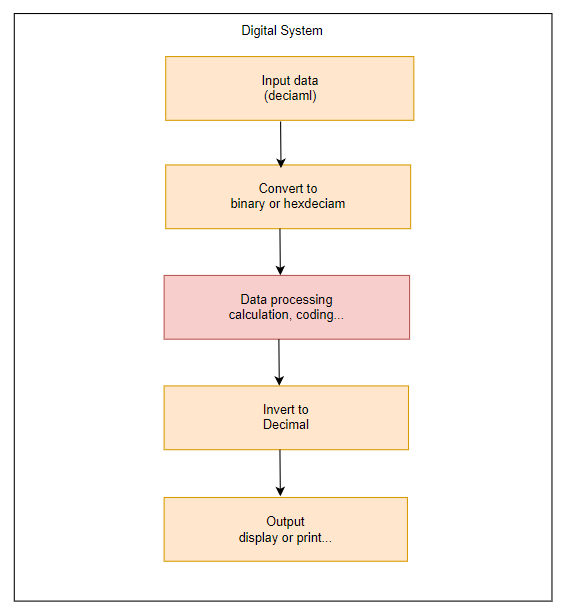We have explained binary and decimal.
- How to Convert Hexadecimal to Binary
- How to Convert Binary to Hexadecimal?
- How to Convert Binary to Decimal
- How to Convert Decimal to Binary?
- Conversion Between Decimal and Binary
Because the decimal system is the most familiar number representation in our daily life and has an intuitive concept of numerical magnitude, it is generally used when displaying numerical values or inputting data. Only professionals would use binary or hexadecimal for input and output.
However, the decimal system is very inconvenient for digital systems to handle. Since the internal mechanisms of digital systems (such as computers) are based on the binary system, they primarily use the binary system for processing. This involves two data conversions: first, the decimal input data is converted into binary (or hexadecimal) numbers for data processing, and then converted back to decimal before output.
Taking a computer as an example, if the input is a decimal number, the software system converts it into binary or hexadecimal, and then performs data processing (such as calculation, encoding, etc.). If the output is still data, it will be converted back to decimal and displayed or printed.

Binary serves as the bridge between decimal and octal/hexadecimal conversion. Therefore, once we convert a decimal number into a binary number, the conversion from decimal to octal or hexadecimal becomes straightforward.